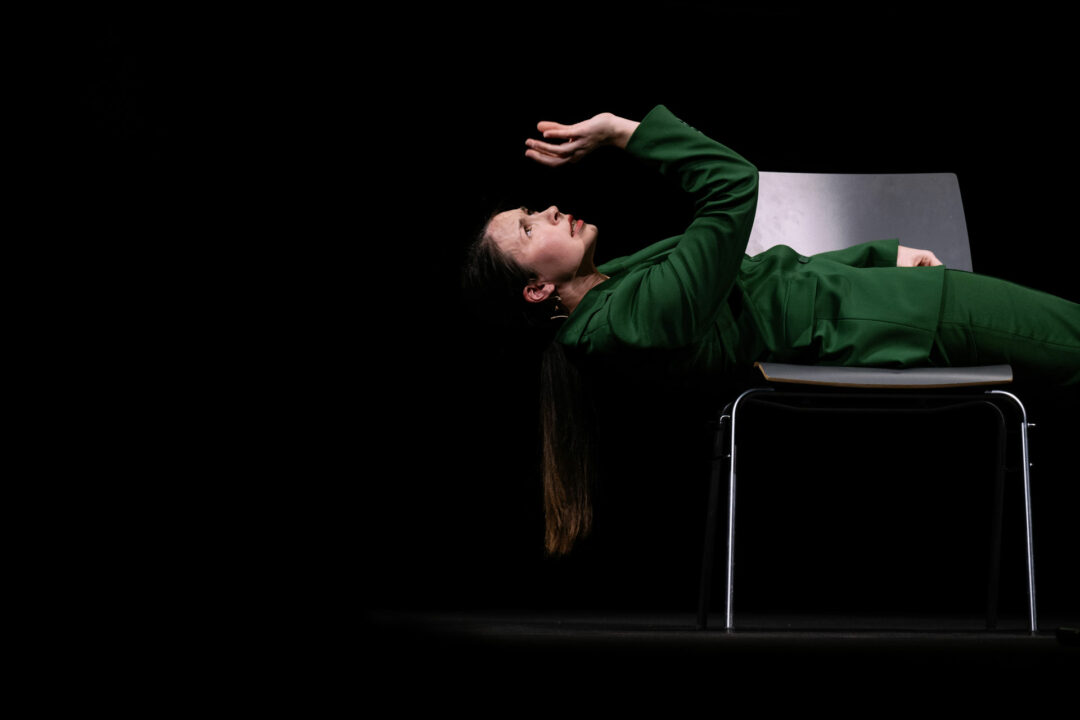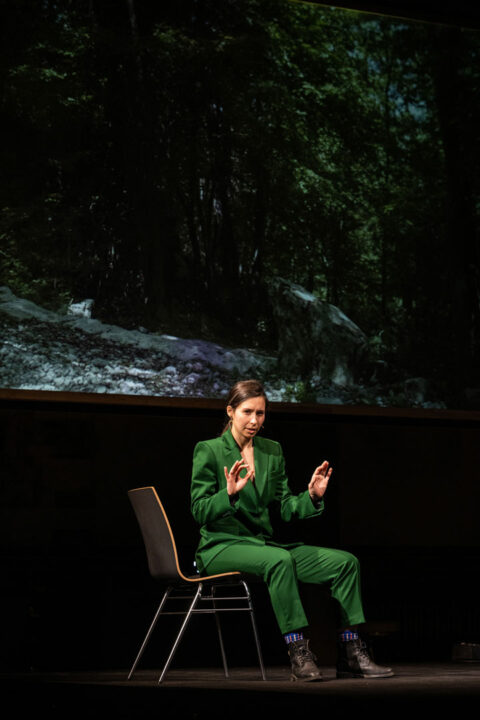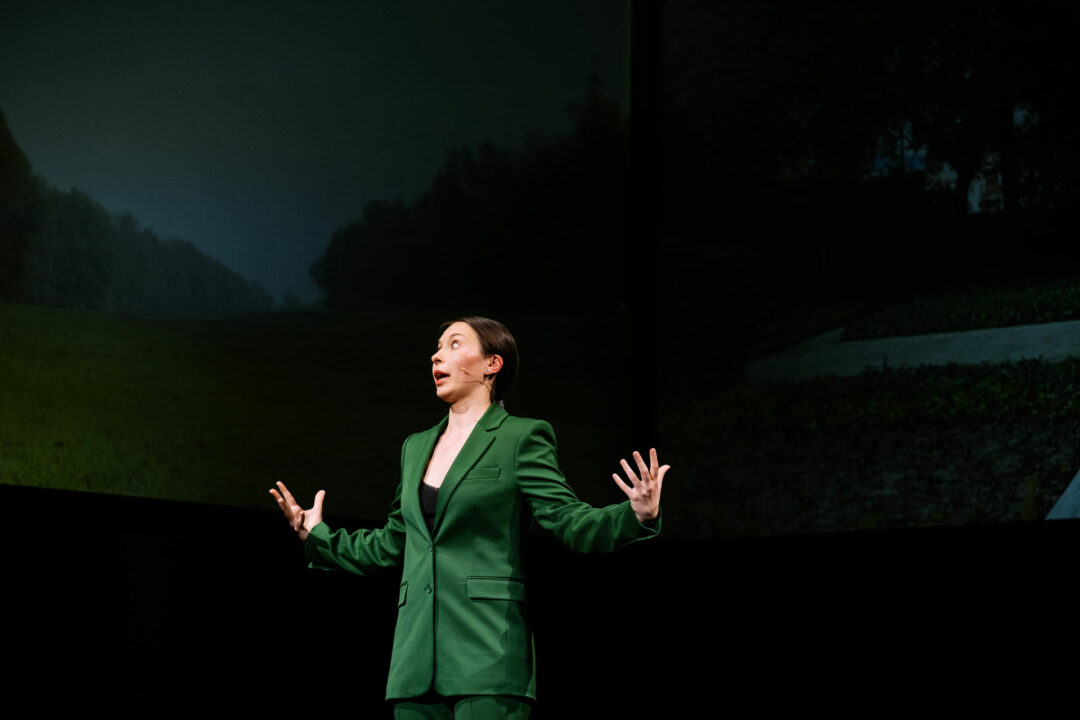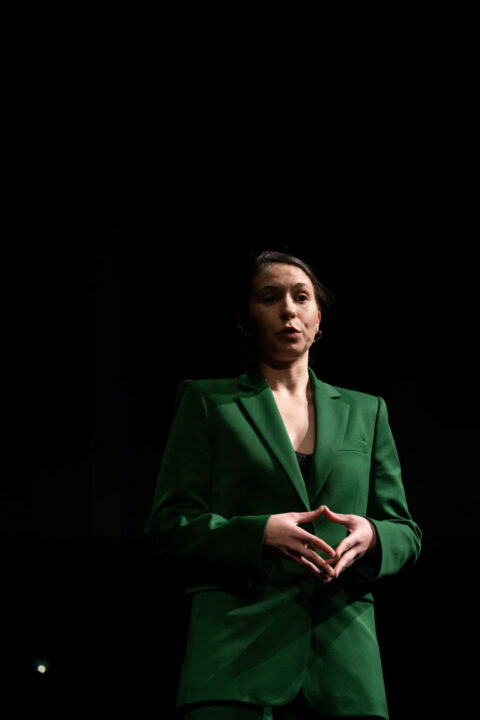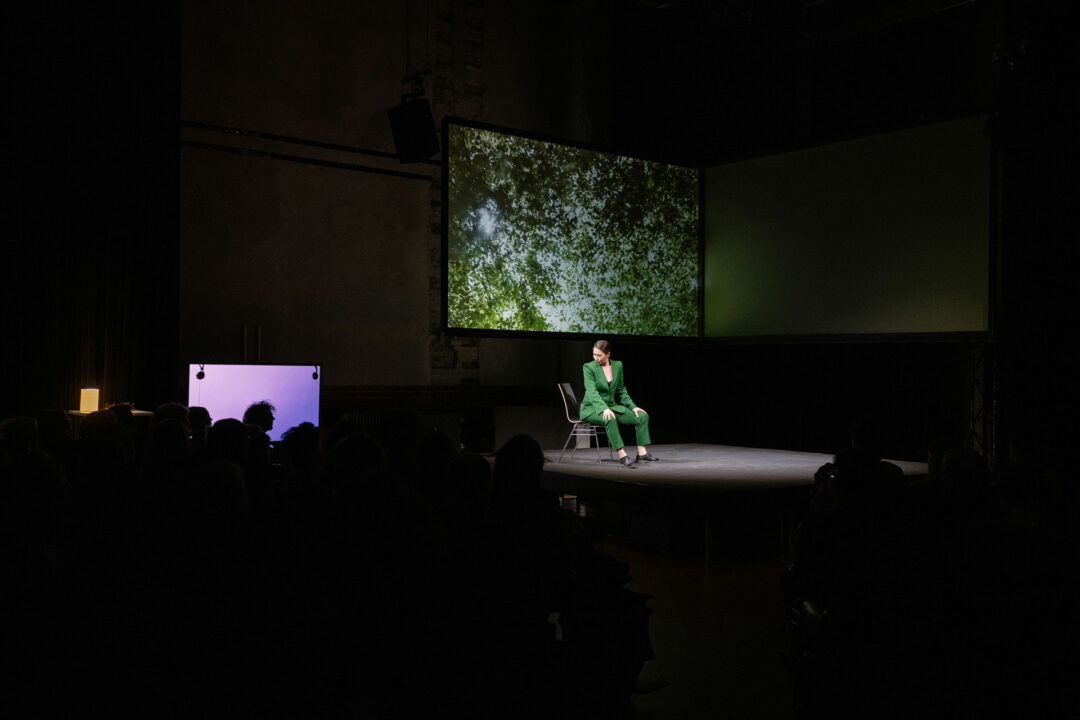Text by Elise Morton
Photos by Camille Blake

“Most people were looking through their phones,” says Mia Štark, having spent part of the afternoon observing how visitors to Barcelona’s Mies van der Rohe Pavilion, where her work-stay with mentor Ana Prvački takes place, responded to the pivotal piece of modernist architecture. She makes this observation without judgement, at the same time reflecting on technology’s role in shaping and mediating our ways of seeing. The artist has, after all, witnessed this before; it was watching her grandmother—in spring and summer a “super connected person,” retreat to her living-room to take in the world via her TV come wintertime—that provided the springboard for Štark’s An Anthology of Glances: at once a comment on, and a gentle guide to, maximizing the way we see.
Though her project stemmed from her grandmother’s reliance on TV news, Štark’s exploration of visual consumption extends far beyond questions of media diet. Her grandmother, typically an engaged observer out in nature, would passively collapse in front of this new technology. But it is her active, or as Štark describes it “old-fashioned way of looking” while outdoors, that forms the backbone of An Anthology of Glances. What does this entail? “It’s this moment of being grounded and simultaneously navigating your movements through patterns of perception,” she expounds, something that the artist recognizes and admires in the paintings of David Hockney and Croatian abstract painter Julije Knifer. He is known for his “meander” visual motif, which is endlessly repeated in his work to create a kind of monotonous rhythm bordering on the absurd. “I feel like painters are the ones who really know how to look,” Štark adds.
Indeed, grounding and motion are not mutually exclusive; for Štark, they go together, even in the seemingly static medium of painting. “What I see in the works of both Knifer and Hockney is movement,” she comments. But it is perhaps dance, in which she completed her initial training, that best demonstrates the marriage of movement and grounded awareness: “You simultaneously need to think about where your head is, where your arm is, where your feet are. Are you going to hit somebody or is somebody going to hit you?” Computing the myriad visual stimuli is just one piece of the puzzle, however. “There is a scene happening around you and all this visual information to take in, but also sound and the sensation on your skin—a tactility,” she notes.
Moving around a space when dancing can offer a range of fresh perspectives. How often do we look up to the cracks in the ceiling or down at the floor beneath our feet? To dance, therefore, is to begin to understand the wealth of viewpoints available to you. An Anthology of Glances offers a similar opportunity. In the vein of self-help podcasts focusing on how to “hack your psyche,” says Prvački, who mentored Štark on this project, the piece “plays with the idea of how to optimize the way you see.” This “hack” can equally be sought in how we approach art. Prvački speaks about often being “pigeon-holed” as a Serbian artist (despite also having Romanian and US citizenship).
However, as she sees it, her work has little to do with analyzing the “post-Yugoslav situation.” Addressing the “Balkan question” is not a priority for Prvački, although she acknowledges that 30 years ago, she and Štark, who hails from Croatia, “would have been enemies of sorts,” and celebrates the progress that has been made. Instead, Prvački seeks to “free the pigeon” and views her work with a young, talented artist like Štark as something “cosmopolitan.” This term, which in its most basic sense means having a worldwide scope or outlook, even serves as a helpful summation of An Anthology of Glances. Let’s endeavor to make our vision, and approach both to art and the world around us, more cosmopolitan. Cosmopolitanism may carry lofty connotations, but in Štark’s work humor is what serves as the vehicle for a shift in perspective.
Turning expectations on their head is implicit in the very title of Prvački’s mentorship: Slapstick and Seduction. Slapstick is characterized by obvious, exaggerated physical humor. Štark, on the other hand, according to Prvački, is “not at all intentionally funny.” Instead, she possesses an “organic humor,” which in addition to Prvački’s feedback, also draws inspiration from the wit she sees in the work of Knifer and Hockney. There are no jokes in An Anthology of Glances; instead, a gentle absurdity tickles and begins to free you from the constrictions of social mores.

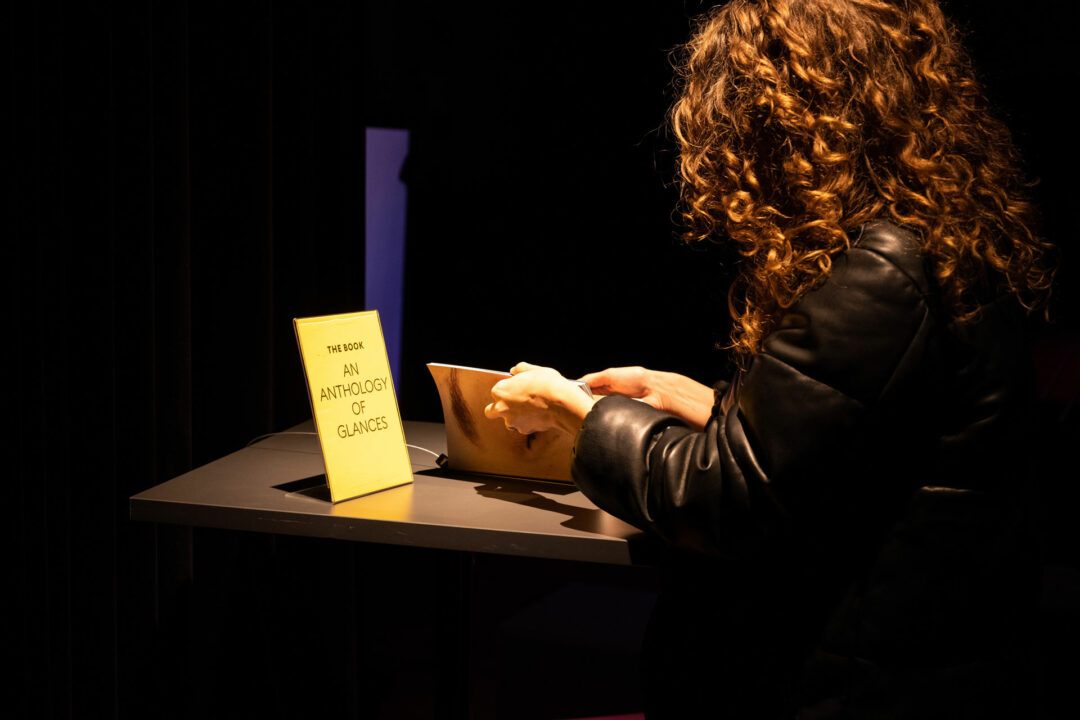
A video work that forms part of the piece, for example, shows Štark at a lookout point in the forest. Rather than simply sitting on the stone bench and surveying the scene, as might be expected in such a spot, she also lies across the length of the bench with her head hanging off the end, moving it to survey the floor. This feat of deadpan absurdity carried over to our (virtual) interview, in which Štark asked me to nearly close my laptop. Being able to see my interviewees thus necessitated sliding beneath the computer, which not only afforded the artists an undoubtedly flattering view of my double chin and me a stifled laugh, but also offered a totally different view of my subjects. Just as I was able to select my own (inevitably ridiculous) position to continue our interview, An Anthology of Glances is not prescriptive. It is, rather, what Štark describes as a “collection of all the possible views,” offering up little “suggestions” that allow audiences to explore. This is where the “seduction” of Prvački’s mentorship comes in—a gentle coaxing, not towards a particular conclusion, but towards a fullness of vision and an awareness of all possibilities. “I like how seduction can be extremely subtle,” says Prvački, citing Štark’s “pedagogical charm.”
“Štark’s a little bit strict, she’s showing and guiding you through these things,” Prvački reflects. “It’s both very subversive and well meaning.” Štark and Prvački disagree about how to describe An Anthology of Glances. Prvački is keen on the word “pelvic,” while for Štark it’s the atlas joint—the pivot joint connecting the skull and spine, responsible for the movement of the head—that serves as the best illustration. Perhaps it can be both. An Anthology of Glances invites a pelvic vision, grounded in the present and rooted through the body, while at the same time embodying the atlas, in terms of both the joint and the book of maps: flexibility, freedom, and an encouraging nudge to (really) see what’s out there.


